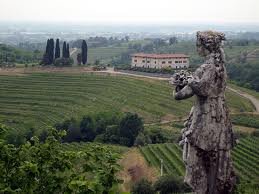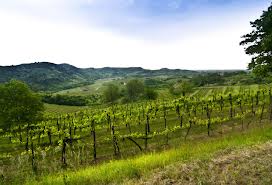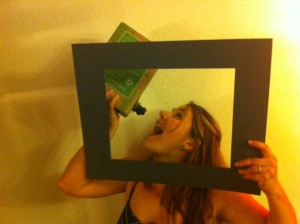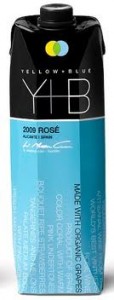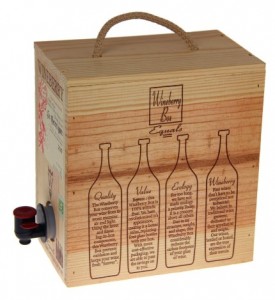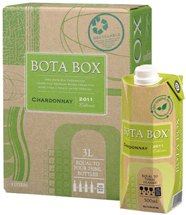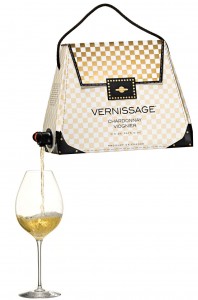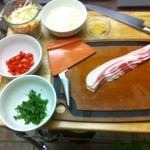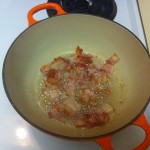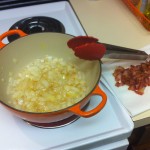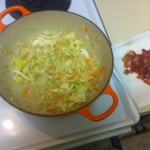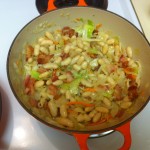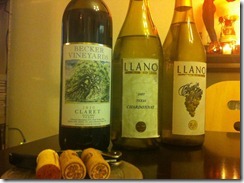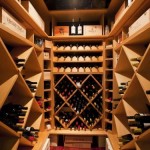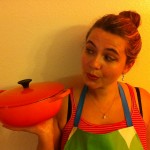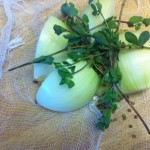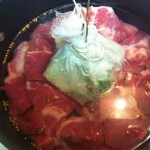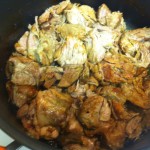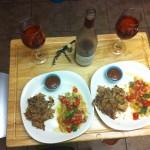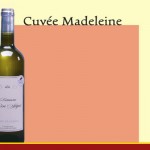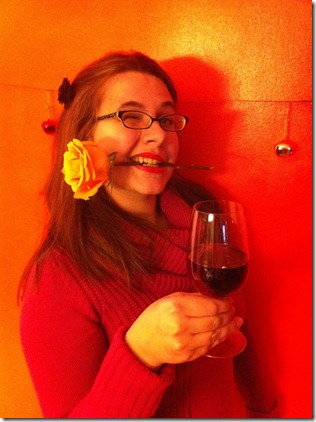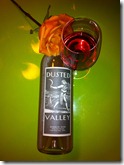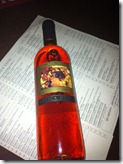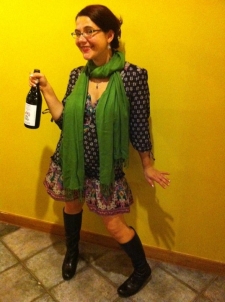Friuli Wine Facts:
Before the phylloxera epidemic, the winemaking history of the Friuli-Venezia Giulia was strongly influenced by the Byzantine Empire’s trading routes to the trading center of Venice. During the Middle Ages, travelers passing through this area brought grapevines from Macedonia and Anatolia. Under the Hapsburg reign, the French grape varieties were gradually introduced, until more than 350 grape varieties were grown in the region. During the 19th century, the region served as a major Mediterranean port for the Austro-Hungarian Empire which brought a Teutonic influence to the area. There are still traces of all of these influences right up to the present.
After phylloxera, production in this region was stunted; it did not start to hit its stride until the 1970s as far as quality wine production is concerned.
Size of Friuli & Placement:
Friuli–Venezia Giulia is Italy’s most North-Eastern region. It covers an area of 7,858 km and is the fifth smallest region of the country. It borders Austria to the north and Slovenia to the east. To the south it faces the Adriatic Sea and to the west its 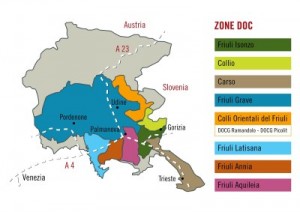 internal border is with the Veneto region.
internal border is with the Veneto region.
Grapes produced:
Over 30 different grapes varieties are grown in the Friuli-Venezia Giulia including international varieties such as Chardonnay, Cabernet Sauvignon, and Merlot as well as local varieties like Refosco dal peduncolo rosso, Schioppettino, Friulano, Ribolla Gialla, and Verduzzo. Although this region is most famous for white wine production, Merlot is actually the most planted grape in the region. Here is a list of some of the most produced varietals:
Whites:
- Chardonnay
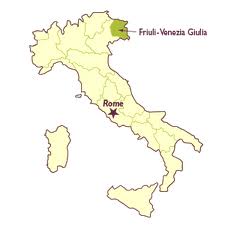
- Pinot Grigo
- Sauvignon Blanc “Sauvignon”
- Gewürztraminer
- Riesling
- Pinot Bianco
- Frilulano (Tocai Friulano)
- Ribolla Giallo
- Verduzzo
- Malvasia
- Riesling Italico
- Moscato Giallo
Reds:
- Merlot
- Cabernet Sauvignon
- Cabernet Franc
- Pinot Noir
- Refosco del Peduncolo Rosso
- Schiopettino
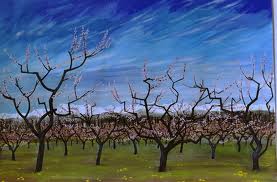
- Pignolo
- Pinot Nero
- Moscato Rosa
A Bit on Wine Law –
These are the EU changes to the DOC system starting in 2008… and continuing to be shaped today.
Italian Wine Classifications:
- Denominazione di Origine Controllata e Garantita (DOCG) / Denominazione di Origine Protetta (DOP)
- Donominazione di Origine Controllata (DOC) / Denominazione di Origine Protetta (DOP)
- Indicazione Geografica Tipica (IGT) / Indicazione Geografica Protetta (IGP)
- Vino (formerly Vino da Tavola)
Friuli’s Main Growing Regions:
There are 9 Denominazione di origin controllata (DOC) and 4 Denominazione di Origine Controllata e Garantita (DOCG) in the Friuli-Venezia Giulia area. The region has 3 Indicazione Geografica Tipica (IGT) designations: Alto Livenza, delle Venezie and Venezia Giulia. Nearly 62% of the wine produced in the region falls under a DOC designation.
Friuli-Venezia Giulia DOCGs (DOP)
Ramandolo-
- Region: Friuli Venezia Giulia
- Province: Udine
- Communes of Production: Nimis, Tarcento
- Denominazione (Bianco): Ramandolo
- Varieties: 100% Verduzzo Friulano (Verduzzo Giallo)
- Minimum Alcohol: 14%
- Minimum Planting Density: 3,000 vines per hectare
- Maximum Yields: 8 tons/ha, 52 hl/ha
- DOCG Established: 2001
Colli Orientali del Friuli-Picolit-
- Region: Friuli Venezia Giulia
- Province: Udine
- Communes of Production: Nimis, Tarcento, Cividale del Friuli, Prepotto, Attimis, Faedis, Torreano, Manzano, S. Pietro al Natisone, S.Giovanni al Natisone, Buttrio, Ipplis, Corno di Rosazzo, Trigesimo, Premariacco
- Subzones: Cialla (produced in the commune of Prepotto)
- Denominazione (Bianco):
- Colli Orientali del Friuli Picolit
- Colli Orientali del Friuli Picolit Cialla
- Colli Orientali del Friuli Picolit Cialla Riserva
- Varieties:
- Colli Orientali del Friuli Picolit: Minimum 85% Picolit, maximum 15% other white grapes of Friuli, excluding Gewürztraminer
- Cialla: 100% Picolit
- Minimum Alcohol:
- Colli Orientali del Friuli Picolit: 15%
- Cialla: 16%
- Aging Requirements:
- Colli Orientali del Friuli Picolit: May not be sold until September 1 of the year following the harvest
- Cialla: May not be sold until September 1 of the second year following the harvest
- Cialla Riserva: Minimum 4 years aging from November 1 of the harvest year
- Minimum Planting Density: 3,500 vines per hectare
- Maximum Yields: 4 tons/ha, 22 hl/ha
- DOCG Established: 2006
Lison (shared with Veneto)-
- Region: Veneto and Friuli-Venezia-Giulia
- Province: Venice (Veneto), Treviso (Veneto), Pordenone (Friuli)
- Communes of Production: 19
- Classico Zone: Lison, Pradipozzo and Summaga (fraziones of Portugruaro); Belfiore, Blessaglia, and Salvarolo (fraziones of Pramaggiore); Carline and Loncon (fraziones of Annone Veneto); Cinto Caomaggiore; Santo Stinto
- Denominazione (Bianco):
- Lison
- Lison Classico
- Varieties:
- Min. 85% Tai (Friulano)
- Max. 15% other non-aromatic white grapes suitable for Venice, Treviso, and Pordenone
- Minimum Alcohol:
- Lison: 12%
- Lison Classico: 12.5%
- Aging Requirements: Wines may not be released before March 1 of the year following the harvest
- Minimum Planting Density: 3,000 vines per hectare
- Maximum Yields:
- Lison: 11 tons/ha
- Lison Classico: 10 tons/ha
- DOCG Established: 2010
Rosazzo –
- Region: Friuli Venezia Giulia
- Province: Udine
- Denominazione: Bianco
- Grape Varieties:
- Min. 50% Friulano (Tai)
- 20-30% Sauvignon Blanc
- 20-30% Pinot Bianco and/or Chardonnay
- Max. 10% Ribolla
- Max. 5% other white varieties suitable for cultivation in Udine
- Minimum Alcohol: 12%
- Aging Requirements: Rosazzo must be placed on the market by April 1 of the second year after harvest
- Minimum Planting Density: 4,000 vines per hectare
- Maximum Yields: 8 tons/ha, 56 hl/ha
- DOCG Established: 2011 (formerly a subzone of Colli Orientali del Friuli DOC)
- The Rosazzo DOCG was created amid a flurry of wine administration activity in 2011, as Italy prepared to hand over wine-legislation powers to the EU.
Friuli’s DOC’s (DOP)
Carso
- Rosso: min. 70% Terrano
- Varietal Wines require a min. 85% of the stated variety
Collio Goriziano/Collio-
- Bianco and Rosso wines may be comprised of any blend of the approved varieties (Müller-Thurgau and Malvasia combined may not account for more than 15% of the Bianco blend)
- Wines labeled “Cabernet” require 100%
- Combined Cab. Franc, Cab. Sauvignon and/or Carmenère; all Varietal wines require a min. 85% of the stated variety
- White wines may be labeled “riserva” with a min. 20 months aging, red wines may be labeled “riserva” with a min.
- 30 months aging, including at least 6 months in wood
Friuli Annia–
- Rosso, Rosato, and Bianco wines may be comprised of any blend of the approved varieties.
- Spumante Bianco: min. 90% Chardonnay and/or Pinot Bianco.
- Varietal Wines require a min. 90% of the stated variety
- Rosato wines must be made by saignage.
- Spumante wines must be brut or demi-sec.
- Rosso and Varietal red wines may be labeled “Riserva” with a min. 2 years of aging (including at least one year in wood).
- Bianco, Rosato, and some varietal white wines may be produced as frizzante.
Friuli Colli Orientali–
- Rosso and Bianco wines may be comprised of any blend of the approved varieties.
- Wines labeled “Cabernet” require a min. 85% combined Cab. Franc, Cab. Sauvignon and/or Carmenère.
- All Varietal Wines require a min. 85% of the stated variety
- All wines may be labeled “Riserva” with a min. 2 years of aging.
- Dolce wines have a min. 50 g/l of residual sugar.
- There are five legal subzones: Cialla, Ribolla Gialla di Rosazzo, Pignolo di Rosazzo, Refosco di Faedis and Schioppettino di Prepotto. Each subzone has its own requirements and varieties.
Friuli Grave-
- Rosso, Rosato, and Bianco wines may be comprised of any blend of the approved varieties.
- Cines labeled “Cabernet” may be Cab. Franc and/or Cab. Sauvignon; Varietal Wines require 90% of the stated variety.
- All wines except Rosato may be Superiore with an additional degree of alcohol.
- All wines except Rosato may be labeled “Riserva” with a min. 2 years of aging. Rosato and some varietal wines may be frizzante.
Friuli Isonzo / Isonzo del Friuli–
- Bianco and Rosso/Rosato wines may be blended from any approved white and red varieties, respectively, except Moscato Gialla and Moscato Rosa.
- Wines labeled “Cabernet” require 100% Cab. Franc and/or Cab. Sauvignon.
- Varietal Wines require 100% of the stated variety.
- Chardonnay Spumante may include up to 15% Pinot Nero
- Pignolo wines must be aged for a min. 2 years.
Friuli Latisana–
- Bianco: Min. 60% Friulano, max. 30% Chardonnay and/or Pinot Bianco
- Rosso and Rosato: min. 60% Merlot, max. 30% Carmenère, Cab. Sauvignon and/or Cab. Franc
- Wines labeled “Cabernet” require a min. 85% combined Cab. Sauvignon, Cab. Franc, and Carmenère
- Varietal Wines require a min. 85% of stated variety
- Rosso, Bianco, Red Varietal Wines, Passito, and Friulano Varietal Wines may be labeled “riserva” with a min. 2 years of aging.
- Many varietal wines can also be released as superiore or frizzante
Lison-Pramaggiore-
- This DOC is located in both Friuli and Veneto
Prosecco-
- This DOC is located in both Friuli and Veneto
Wines On Today’s Show:
Marco Felluga:
MARCO FELLUGA is situated in Gradisca d’Isonzo, province of Gorizia. Founded in 1956, the estate is both a pioneer in quality as well as innovation and today comprises 250 acres of vineyards of which production is roughly seventy five percent white grapes and the remainder red. All of the wines come from vineyards within the most important DOC known as Collio Goriziano, or Collio.
The white wines are filtered before being fermented at controlled temperatures in stainless steel vats. A certain proportion of the wine is refined in wooden casks, as are some of the red wines. The equipment used in the winemaking is of the latest technology updated through continual experimentation and in order to obtain the ideal results in harmony with respect for tradition.
The property today is managed by Roberto Felluga, son of the prominent Marco Felluga, the inheritor of the founding Marco.
http://www.dallaterra.com/pdf/Felluga.pdf
http://www.marcofelluga.it/Marco%20Felluga%20Collio%20Bianco%20Molamatta.asp
Marco Felluga Molamatta Collio Bianco DOC 2009
Blend & Oak: 40% Friulano, 40%Pinot Bianco 20% Ribolla Gialla. Pinot Bianco is fermented in small oak barrels, the balance is fermented in stainless steel.
Sight:
- Color: Bright yellow to watery rim
- Brightness: Brilliant
- Viscosity: Medium
- Age/Conditions: Youthful/Healthy/No Gas/No Sediment
Nose: The nose is youthful and highly aromatic. There are strong notes of Meyer lemon, Kefir lime, and ripe peach, laced with herbal notes of Thai basil, fresh cut grass, and cucumber, and high notes of jasmine, and Lilly, and a slight trail of lucky charms marshmallows.
Pallet:
- Acid: High
- Sugar: Dry
- Body: Medium +
- Alcohol: 13.5%
- Complexity: High
Primary Notes: The citrus, and floral notes carry to the pallet. Along with a silky vanilla note.
Oak: Subtle new oak.
Quality: High
Finish: Lingering and exciting.
Possible Pairings: Creamy cheeses such as Robiola Bosina, spicy Thai dishes such as Rama, or Panang.
Borgo Magredo:
Borgo Magredo is located in the “Grave del Friuli” appellation. The characteristic gravelly soil of this area is created by the Meduna River, which flows down from Carnic Pre-Alps, bringing along pebbles and stones. The soil is so “meager” (hence the Italian word “Magredo”) that the vines appear to be planted in a streambed.
These stones have always been part of a local tradition: the art of mosaics! History tells us that the mosaic in the cathedral of Santa Eufemia was composed, in the VI century, with stones taken from the area where Borgo’s vineyards are now located. Borgo Magredo has chosen a mosaic as its symbol and tribute to the cultural achievements of the school of mosaic art in Spilimbergo.
Piero Totis – The particular microclimate of its location contributes substantially to the distinct style of Borgo’s wines. The stones in the soil capture heat during the day and release it at night, protecting the grapes from the low temperatures. The warm draft then flows towards the mountains and its low-pressure draws cooler breezes from the snowy peaks. The cool-warm temperature cycles span over 4 square miles of Grave vineyards and contribute to the unique aroma, flavor and fragrance of Borgo’s wines.
Borgo Magredo, with its 250 hectares of vineyards (almost 620 acres) and a production capacity of one million bottles per year, is the largest estate in Friuli. Owned by the insurance company “Generali”, Borgo Magredo is equipped with the most modern technology as the innovative vacuum-press that crushes the white grapes very gently.
http://www.winesfrombedford.com/suppliers/borgo_magredo.php
Borho Magredo Mosaic Pinot Grigio, Friuli Grave DOC, 2010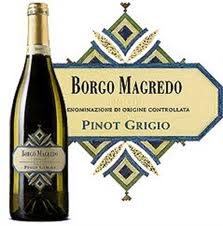
Production: Estate bottled 100% Pinot Grigio. Temperature controlled fermentation in new stainless steel vats.
Sight:
- Color: Dusty light peach to a silver rim
- Brightness: Star bright
- Viscosity: Medium
- Age/Conditions: Healthy/ Youthful/ No Gas/ No Sediment/ Possible Skin Contact
Nose: This is a healthy nose with a bit of development and or lees aging. It leads with tropical notes of banana, green mango, and bruised apple, followed by notes of short bread, and saline.
Pallet:
- Acid: High
- Sugar: Dry
- Body: Medium
- Alcohol: 12.5%
- Complexity: Medium
Primary Notes: There are more citrus notes of tangerine & Meyer lemon, followed by the same tropical notes from the nose. The yeasty and salty notes carry to the pallet which confirm my suspicions of lees and skin contact.
Oak: No Oak
Quality: High
Finish: Lingering
Possible Pairings: Garlic cream sauces & fatty fish such as Sea Bass.
If you are looking to visit the region here are some fun resources:
Discover Friuli Wine Tours:
Aimed at anyone with a love and appreciation of fine food and wine, you’ll enjoy special visits to leading wine estates as well as boutique wineries. You’ll meet the wine-makers, share their knowledge about the wine-making process and taste lots of wine!
http://www.discoverfriuli.com/eng/wine/wine.html
Private Friuli Wine Tour:
During our day, we will visit prestigious wineries that are renowned for both the high quality of their wines and the historical value of their estates. Combined with scenic drives through the delightful countryside and the visit of a charming hill town, a very special day awaits you.
http://www.tours-italy.com/venice-italy_wine_tours-friuli_wine_tasting.htm
Hope this is has been fun and informative!
Salute!

